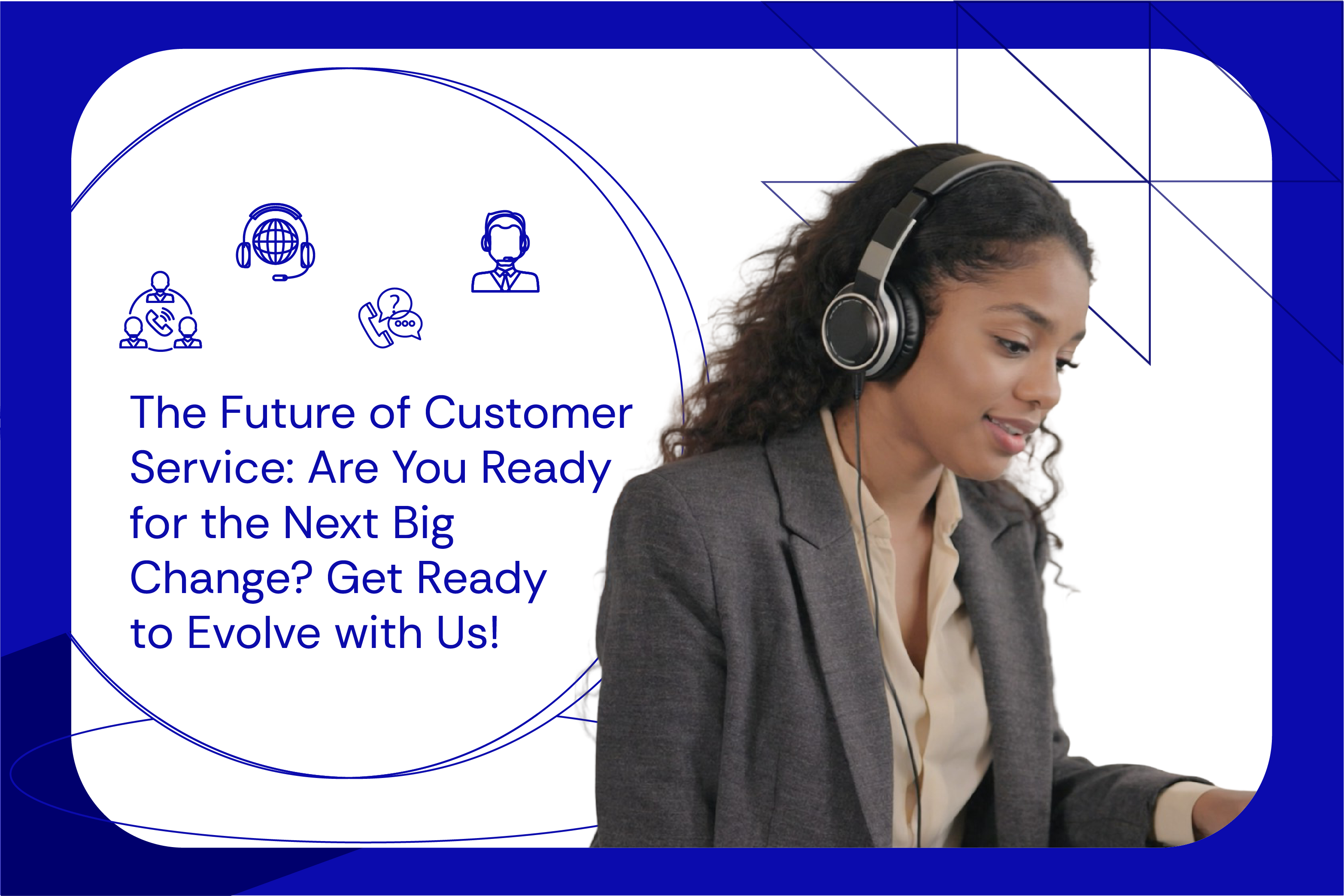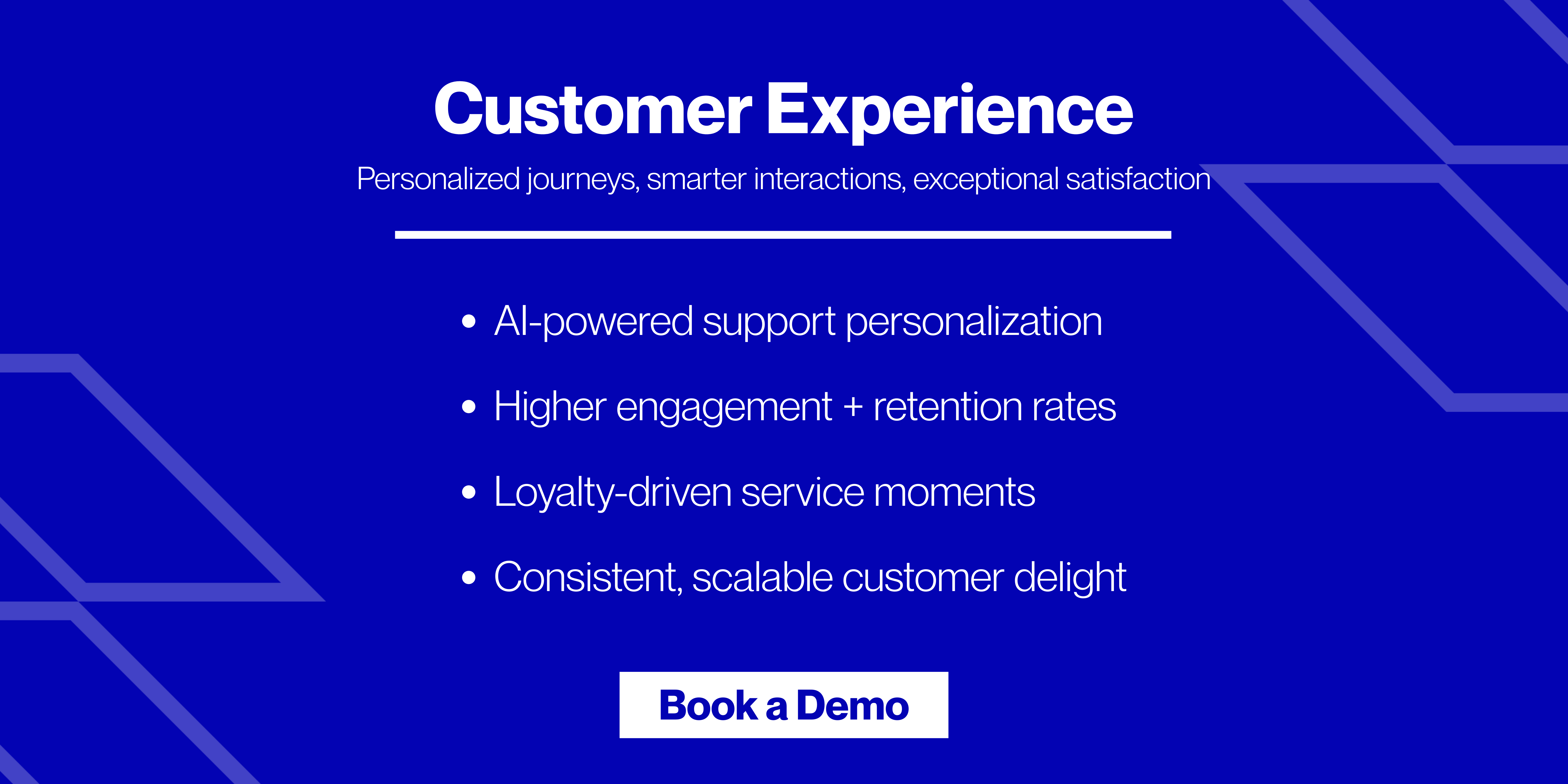Key Takeaways
- The future of customer service blends AI efficiency with human empathy.
- Omnichannel support and personalization are no longer optional—they’re expected.
- Predictive support will help businesses solve problems before customers even ask.
- Investing in people, tools, and real-time feedback is the key to staying competitive.
- For consumer brands and D2C companies in the US, UK & Australia, CX leaders who align AI, human skills and data will win customer loyalty and long-term revenue.
What Is the Future of Customer Service?

At its core, the future of customer service is all about proactive value. That means showing up before the customer even realizes they need help. It means solving problems quickly, personally, and across whatever channel they happen to be using in that moment, without missing a beat.
This shift isn’t just about adding chatbots or slapping “24/7” on your website. It’s about rethinking what service means entirely. It’s about making every interaction feel effortless and connected—from a quick product question on Instagram to a complex billing issue handled over the phone. Here’s what that looks like in practice:
- 24/7 support, everywhere your customers are. Live web chat support, email answering service outsourcing, WhatsApp, social DMs, voice as service—whatever works for them.
- AI is doing the heavy lifting. Routine questions get instant answers, while your team focuses on higher-impact conversations.
- Predictive service. Imagine reaching out to a customer before they hit a problem, because your system flagged it first.
- Human connection, where it counts. Tech handles the speed, humans bring the heart.
The biggest change? Service isn’t just a department anymore—it’s a core part of the customer experience consulting. That means it touches everything: brand perception, retention, referrals, even revenue. Let’s dive right into what the future of customer service looks like!
For CX executives, this means that service is a growth driver that impacts retention, referrals and brand reputation.
Customer Service Trends 2025: What’s Coming Your Way?

Here’s what customer service trends in 2025 are shaping up to look like:
AI as a Co-Pilot, Not a Replacement
AI isn’t coming for your support team’s jobs. It’s not the villain in a sci-fi movie. It’s more like the trusty sidekick who helps your agents do what they do even better. Think of AI as your team’s extra set of hands (and brainpower). It can:
- Instantly route tickets to the right person
- Analyze customer tone and urgency
- Suggest responses based on past conversations
- Autofill common replies so your agents can move faster without breaking a sweat
And the best part? AI works 24/7, never gets tired, and doesn’t take days off. According to IBM, AI-driven service can reduce costs by up to 30% while improving resolution speed. For VP and Director level leaders, that’s an impact on efficiency and customer satisfaction. That also means your team can finally stop drowning in repetitive tickets and start focusing on the complex stuff that builds real customer loyalty—like walking someone through a complicated issue, calming down an angry caller, or turning a near-cancellation into an up-sell.
Omnichannel Customer Experiences Become the Baseline
When it comes to customer support, customers care about one thing only: Getting help, quickly and easily, wherever they happen to be. And here’s the thing: they expect that experience to be smooth across every single channel.
Gartner reports that businesses with strong omnichannel engagement retain up to 89% of customers compared to 33% for weaker strategies. For consumer brands, this difference is worth millions in revenue retention.
In 2025, omnichannel support is no longer optional. It’s the new baseline. If your support feels clunky or disconnected across platforms, customers will notice and won’t stick around. In fact, brands that have powerful omnichannel customer engagement see a year-on-year revenue growth of 9.5% vs 3.4% for businesses with weaker strategies. Businesses are increasingly using unified support platforms that bring all channels together. When agents can see the full story—across chat, email, social, and more—they’re faster, more confident, and way more helpful.
Predictive Support Takes Off
You know what’s better than solving a customer problem quickly? Solving it before they even have to ask. That’s where predictive support comes in—and by the end of 2025, it’s going to be a game-changer. CX leaders are trying out predictive models to cut churn and reduce inbound ticket volumes. Here’s what that could look like:
- A customer’s usage drops suddenly — You reach out to check if they need help or a refresher
- A payment is about to fail — You send a gentle nudge before the charge attempt
- A shipment is delayed — You send an update before they go hunting for a tracking link
- Multiple failed login attempts — You ask if they need a password reset, before the rage-clicking starts
Predictive support is about using the data you already have billing systems, product usage stats, and CRM info, to create moments of proactive care. And customers? They love this kind of stuff. It feels thoughtful. It feels helpful. And most importantly, it makes them feel like more than just a ticket number.
Human Skills Matter More Than Ever
While automation is getting more and more dominant, here’s a twist. The more technology we add, the more customers crave real human connection. We’ve all been frustrated by a chatbot that doesn’t quite get it or stuck in a maze of automated prompts when we just want to talk to a person. That’s why the human element in customer service isn’t going anywhere. A PwC study found that 55% of consumers are willing to pay more for better customer experience when it includes human empathy.
A great idea for staying on top of this trend is to bake emotional intelligence into your training. Don’t just teach agents what to say—teach them how to say it. Use roleplay, real-world scenarios, and feedback sessions to help your team develop true customer connection skills. Because, in a world full of automation, human connection becomes the ultimate competitive edge.
Customer Service Challenges of the Future
The future of customer service is exciting, but it’s not without its challenges. As the pace of change speeds up, staying ahead won’t just be about adopting the latest tech. It’ll be about adapting in a way that keeps your customers at the center.
Here are a few of the biggest hurdles most teams will need to navigate:
- Balancing Automation with the Human Touch: The challenge? Knowing when to let the bot handle it and when to bring in your human team. Too much automation? Customers feel ignored. Too little automation? Your team burns out, and your support backlog explodes. Future-ready brands are training AI to take care of the repetitive stuff (like password resets and order updates) while empowering their people to jump in for complex escalations.
- Maintaining Consistency Across Growing Platforms: Your customer might start a chat on your website, follow up via email, and drop a comment on your Instagram post—all in one day. The more platforms you support, the harder it gets to keep context, tone, and information aligned. What to watch for:
- Are your support tools truly integrated?
- Can agents see full customer history across channels?
- Is your brand voice consistent from chatbot to agent to inbox?
- Upskilling Teams to Keep Pace with Tech: Technology is evolving fast, and you need to make sure your team keeps up. You need to actively invest in your people, helping them grow digital confidence and emotional intelligence. You need agents who have soft skills like empathy and listening as well as technical skills such as navigating AI tools and interpreting data.
- Using Data Responsibly and Transparently: Customer data is powerful, but it’s also personal. 63% of millennials are happy to share their data in exchange for personalized offers, but in the end, the privacy of this data needs to be protected. That means:
- Being clear about how and why you collect data
- Building measures to ensure data privacy
How to Get Future-Ready
The future of customer service can feel a little overwhelming. But the good news? You don’t need to transform everything overnight. You just need to take a few smart steps right now to start future-proofing your support. Let’s break it down:
- Invest in Tools That Scale With You: Your support stack should grow with your team, not hold it back. Start small if you need to, but look for:
- CRMs that sync across channels
- AI-enhanced helpdesk tools
- Chatbots that actually sound human
- Self-service portals that empower customers to solve basic issues on their own
- Train Your Team on Relevant Skills: Soft skills are the new power skills. Tech will keep evolving, but no amount of automation can replace genuine empathy or critical thinking in high-stakes support moments. That’s why your training can’t just be “how to use the platform.” It needs to include:
- Emotional intelligence
- Active listening
- Writing tonalities (especially in chat and email)
- Problem-solving when there’s no playbook
- Make Customer Feedback Your North Star: What your customers say—and how they behave—is your roadmap. Track CSAT, NPS, and resolution time, yes. But also pay attention to:
- Why are people contacting you
- Which features create the most friction
- What language shows up again and again in feedback
- Break Down Silos: The future of customer service is collaborative—across teams, tools, and channels. Because when marketing knows what customers are struggling with, or when your product team hears recurring feature requests from support? That’s when real improvements happen. Start with:
- Regular cross-team syncs
- Shared dashboards and metrics
- Slack channels or tools that keep feedback flowing across departments
For VP and Director level CX leaders, these shifts mean moving to designing proactive systems.
Are You Ready for the Evolution of Customer Service?

The future of customer service isn’t some distant thing you’ll deal with someday. It’s already happening. This new era of service isn’t just about answering tickets faster or installing the latest chatbot. It’s about creating meaningful moments that build loyalty, reduce churn, and turn casual buyers into lifelong advocates.
Great customer service in 2025 is about combining AI-driven efficiency with empathy to reduce churn and grow lifetime value.
It’s about:
- Using AI to work smarter
- Giving your team the tools and the training to shine
- Showing up consistently across every touchpoint
- Listening deeply and acting boldly on what your customers need next
In this next-gen world, good support won’t cut it. Only great, scalable, future-ready support will. If you’re looking for a customer experience outsourcing partner that can help you navigate this future, look no further than Atidiv. We are a team of customer experience specialists that help fast-growing companies and enterprise brands deliver support that feels effortless to customers and scalable to you.
Whether you’re:
- Looking to unify your omnichannel customer experience
- Ready to bring in AI without losing the human touch
- Wanting to proactively support customers before problems pop up
At Atidiv, we partner with consumer brands and D2C companies in the US, UK & Australia to design future-ready support operations.
We help CX leaders:
- Unify omnichannel experiences
- Integrate AI without losing human touch
- Scale support without losing quality
Our customer experience outsourcing solutions are built for VPs, Directors and senior CX managers who want to turn support into a competitive advantage. Partner with Atidiv and scale smarter.
FAQs On the Future of Customer Service
1. What is the future of customer service?
It’s faster, more personalized, and driven by smart tech like AI, but it still centers around human connection and proactive problem-solving.
2. How is the customer service industry evolving?
Customer service is shifting from reactive to proactive, with more focus on omnichannel support, data-driven decisions, and emotionally intelligent teams.
3. Will AI replace human agents in customer service?
Not likely. AI will handle routine tasks, but real people will always be needed for complex issues, empathy, and relationship-building.
4. What customer service trends should we expect in 2025?
Think predictive support, seamless omnichannel experiences, real-time personalization, and a stronger focus on soft skills.
5. How can I prepare my business for the future of customer service?
Invest in integrated tools, upskill your team, embrace automation, and use customer feedback to constantly improve the experience.

